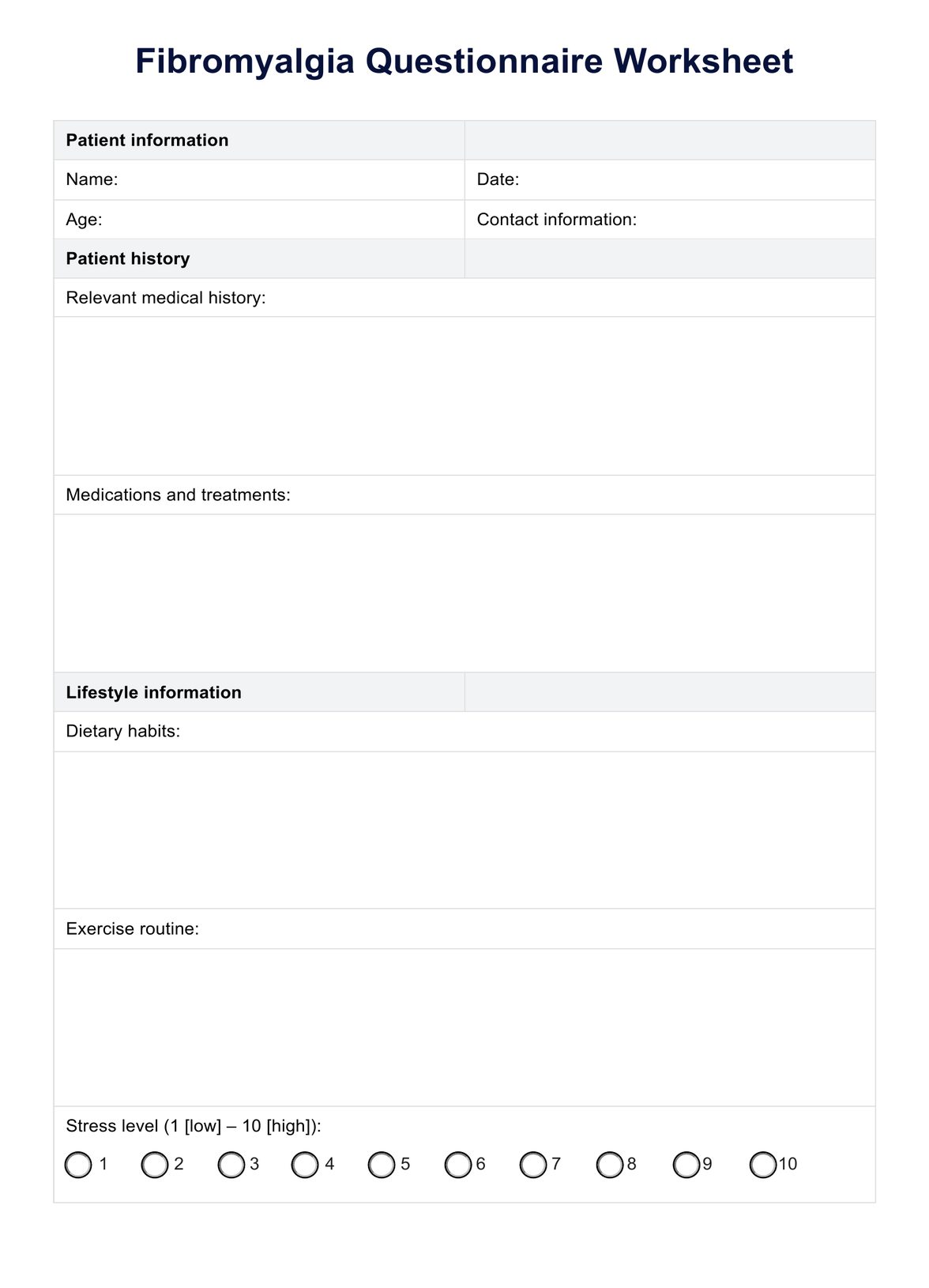Fibromyalgia typically presents with widespread pain, fatigue, sleep disturbances, and cognitive difficulties known as “fibro fog,” which affects concentration and memory.

Fibromyalgia Questionnaire Worksheet
Download our free Fibromyalgia Questionnaire Worksheet for an adequate evaluation and diagnosis tool. Explore symptoms, causes, and treatment options.
Fibromyalgia Questionnaire Worksheet Template
Commonly asked questions
There is no cure for fibromyalgia, but a combination of medications, lifestyle changes, and therapeutic interventions can help manage symptoms and improve quality of life.
Fibromyalgia is diagnosed primarily through clinical evaluation, including a patient’s history and a physical exam. Doctors often use the Widespread Pain Index and symptom severity scale to assess patient status condition after a physical examination and ruling out other potential causes of the symptoms.
EHR and practice management software
Get started for free
*No credit card required
Free
$0/usd
Unlimited clients
Telehealth
1GB of storage
Client portal text
Automated billing and online payments











